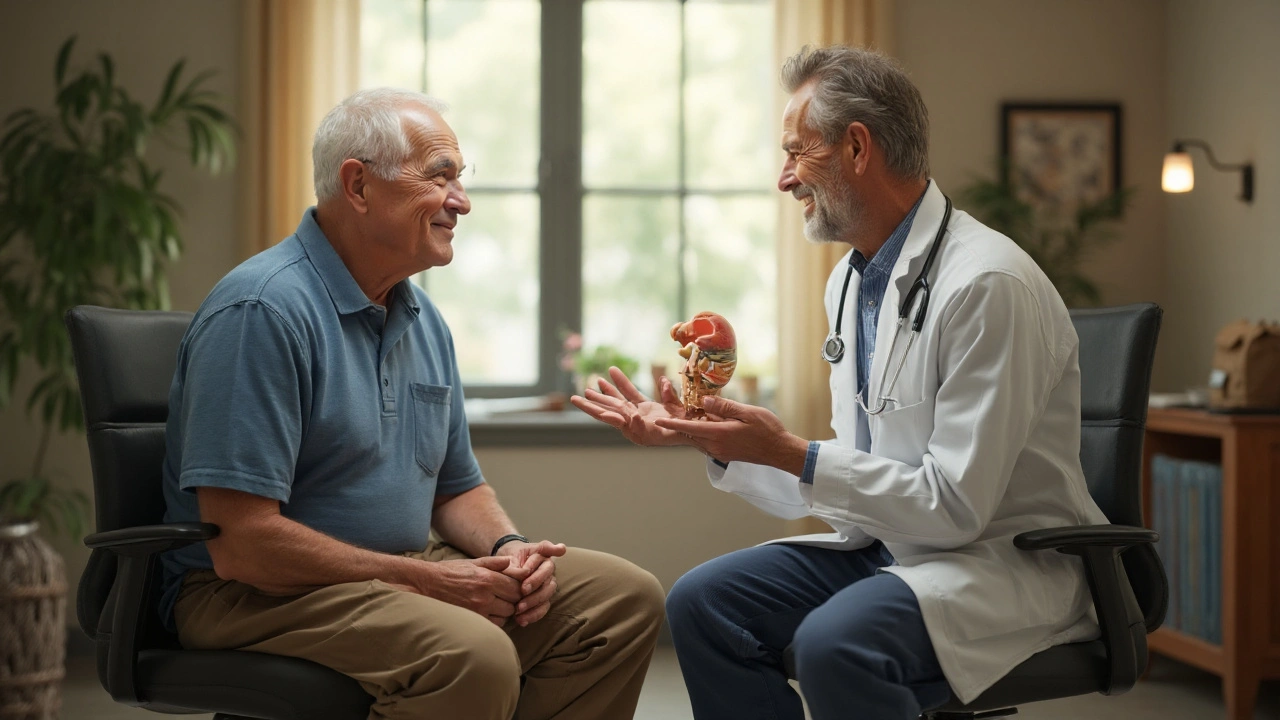Prostate Massage: What It Is and Why It Matters
If you’ve heard the term "prostate massage" and wondered what all the buzz is about, you’re not alone. It’s a simple, low‑tech way to stimulate the prostate gland, a small organ that sits just in front of the rectum and helps produce semen. Many men use it to improve sexual pleasure, relieve uncomfortable symptoms, or support prostate health.
Think of it like a gentle check‑in with your own body. The prostate can get congested or inflamed, especially as you age, and a light massage can help clear out fluid, improve blood flow, and make you feel better. Some people also report stronger orgasms and a deeper sense of relaxation after regular sessions.
Why Try Prostate Massage?
First, it can boost sexual pleasure. By stimulating the prostate, you tap into a source of intense sensation that many describe as a "Power‑gush" orgasm. This type of climax often feels different from a typical penile orgasm—longer, fuller, and sometimes with a feeling of heat throughout the pelvis.
Second, it may help with mild prostate issues. Men who suffer from prostatitis (inflammation of the prostate) or chronic pelvic pain sometimes find that gentle massage reduces pressure and eases discomfort. The massage helps move secretions that might otherwise build up and cause pain.
Third, it’s a way to stay in tune with your body. Regularly checking how the prostate feels can alert you early to changes that might need a doctor’s look‑over. It’s not a replacement for medical exams, but it can be a useful self‑monitoring tool.
How to Do It Safely
Start with clean hands and plenty of lubricant. Water‑based lubes work best because they’re easy to clean and don’t degrade latex if you use a glove. Trim your nails and consider wearing a thin latex or nitrile glove to keep things hygienic.
Find a comfortable spot—lying on your side with knees drawn up, or squatting on a firm surface. Take a few deep breaths to relax your pelvic muscles. When you’re ready, slowly insert the finger (or a beginner‑friendly prostate massager) about one to two inches into the rectum. You should feel a small, round bump toward the front; that’s the prostate.
Use gentle, circular motions and listen to your body. A light press or a soft “come‑here” movement is usually enough. If you feel any sharp pain or intense pressure, stop immediately. The goal is comfort, not force.
After a few minutes, you can experiment with a slightly firmer press or a slow back‑and‑forth motion, depending on what feels good. Many men find that the best results come from short, consistent sessions rather than long, intense ones.
When you’re done, withdraw slowly, wash your hands, and clean any tools you used. If you notice persistent pain, blood, or unusual discharge, schedule a check‑up with a urologist—it could signal an infection or another condition.
Prostate massage isn’t for everyone, but for many it offers a simple, natural way to boost pleasure and support prostate health. Start slow, stay clean, and pay attention to how your body reacts. Over time you’ll find a rhythm that works for you, whether you’re exploring new sensations or just looking for relief from mild discomfort.
How Prostate Massage Helps Relieve BPH Symptoms: Benefits, Risks & Evidence
Explore how prostate massage can ease BPH symptoms, its mechanisms, clinical evidence, safety tips, and how it compares with standard treatments.
